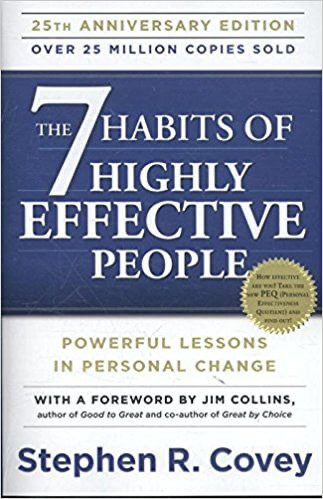Good Habits and Bad Habits: Wendy Wood’s Lessons
Introduction to the Concept of Habits
Habits are repeated behaviors that become automatic in a person’s daily life. They are manifestations of our choices, influenced by our environment, past experiences, and individual values. Over time, good habits and bad habits develop, significantly impacting mental and physical health, productivity, and interpersonal relationships.
The importance of habits in our lives is widely recognized, as they facilitate efficiency in daily activities. For example, morning habits like exercise or reading can contribute to better overall well-being and increased energy levels throughout the day. In contrast, bad habits, such as smoking or excessive sugar consumption, can lead to long-term health problems. This distinction highlights the importance of being aware of the habits we adopt and how they can be modified to improve quality of life.
The role of habits in shaping personality and lifestyle is an interesting aspect to explore. Over time, what we do repeatedly becomes an integral part of our identity. Thus, habits influence not only the daily sequence of activities but also our perceptions of ourselves, which can determine levels of self-efficacy and personal satisfaction. It is essential, therefore, to evaluate our habits and remain open to changing them for personal development and overall well-being.

The Psychology of Habits
The psychology of habits is a fascinating field that explores how behaviors become automatic through specific mental mechanisms. Habit formation is a complex process influenced by repetition, motivation, and a characteristic cycle consisting of cue, routine, and reward. Habits often emerge as reactions to stimuli, intrinsically linked to the context in which they are experienced.
The first element of this cycle is the cue, which can be any external or internal factor that triggers a behavior. For example, seeing coffee on your desk may become a cue to drink it. Once the cue is identified, the routine follows—the action taken in response to that cue. This can range from a simple action, like picking up a cup, to a more complex behavior, like completing a work task.
The final step in the cycle is the reward, which provides momentary satisfaction and reinforces the behavior. When a routine is associated with a positive reward, it becomes more likely to be repeated in the future. For instance, drinking coffee may provide the energy needed to tackle a new challenge at work, increasing the desire to repeat this behavior.
It is important to note that habit formation is not a uniform process for all individuals. Personal motivations, environment, and behavioral history influence how habits develop. In recent decades, extensive studies have been conducted to better understand these cognitive and emotional processes, emphasizing the importance of awareness and habit management to promote a healthy lifestyle.
Good Habits: Definition and Examples
Good habits are positive behaviors or practices that contribute to individual and collective well-being. These habits are often characterized by regularity and consistency, having a beneficial impact on physical health, mental health, professional life, and social interactions. The existence of a good habit not only fosters personal development but also helps create a healthier and more constructive social environment.
An example of a good habit is regular physical exercise. Practicing sports not only improves cardiovascular health but also helps maintain an optimal body weight. As a beneficial activity, exercise can reduce the risk of chronic diseases such as diabetes or high blood pressure. Additionally, physical activity has a positive effect on mental state, helping to reduce stress and anxiety.
In the workplace, efficient task organization and planning are among the beneficial habits. Setting priorities and realistic goals contributes to increased productivity. Employees who adopt such practices are more efficient, and teams benefit from a healthier work environment where collaboration and communication are emphasized.
Continuous education also represents a good habit. This involves a commitment to constant learning and seeking new knowledge, whether through formal courses or self-study. Staying up to date with knowledge contributes to professional and personal development.
Finally, cultivating positive interpersonal relationships through open communication and empathy is another beneficial habit. These practices help form authentic connections and build an emotional support network, essential for mental health.
Bad Habits: Definition and Examples
Bad habits are negative behaviors that become repetitive exercises, often at the expense of physical and mental health. These habits can be conscious but often develop unconsciously, fueled by environmental and emotional factors. Among the most common bad habits are procrastination, substance abuse, and unhealthy eating habits.
Procrastination represents the tendency to postpone tasks or activities, often in favor of immediate distractions. This practice can lead to chronic stress, wasted time, and even a decline in work quality. Beyond its impact on productivity, procrastination can generate feelings of guilt and anxiety, affecting an individual’s overall well-being.
Substance abuse, such as alcohol and tobacco, is another common form of bad habits. These substances can cause addiction and have devastating effects on physical and mental health. For example, smoking is associated with severe conditions, including lung cancer and cardiovascular diseases. Additionally, excessive alcohol consumption can lead to liver disorders and other long-term health complications.
Finally, unhealthy eating habits, such as excessive sugar and saturated fat intake, can cause obesity, diabetes, and other health problems. However, it is essential to recognize that bad habits are often interconnected and that lifestyle changes can significantly contribute to preventing negative health effects. Identifying and becoming aware of these habits are essential steps in improving quality of life.
The Connection Between Habits and Success
Habits play a crucial role in achieving personal and professional success, significantly impacting how individuals manage time, resources, and efforts. Studies have shown that people who develop good habits tend to achieve better results in various fields, including career, education, and health. Research by psychologist Angela Duckworth suggests that perseverance and discipline—habits manifested through continuous effort—are often more predictive of success than innate talent.
Another study by Wendy Wood, an expert in human behavior, highlighted how habit formation correlates with productivity and overall well-being. According to her research, automatic habits, formed through repetition and consistent practice, allow individuals to focus their attention on more complex tasks, thereby increasing efficiency and results. This suggests that a set of healthy habits—such as time management, balanced nutrition, and regular exercise—not only improves performance but also contributes to general well-being.
Furthermore, Wood emphasizes the influence of the environment on habits. A conducive environment can facilitate the adoption of positive habits, while one that encourages harmful behaviors can lead to stagnation. Thus, individuals who structure their environment to support beneficial habits are more likely to experience success and satisfaction in their personal and professional lives. In conclusion, habits—whether good or bad—form the foundation of how we shape our lives, offering valuable lessons for long-term success.
Reversing Bad Habits: Strategies and Techniques
Reversing bad habits requires a deliberate and well-structured approach. One of the most effective strategies is setting clear goals, which provide direction and motivation. These goals should be specific, measurable, achievable, relevant, and time-bound (SMART). For example, instead of saying, “I will eat healthier,” a better-defined goal could be, “I will consume two servings of vegetables at every meal for the next four weeks.” This allows for progress monitoring and strategy adjustments when necessary.
Self-reflection also plays a crucial role in the process of replacing harmful habits. It is essential to analyze the underlying reasons for your habits. Questions like, “Why do I choose to consume this product?” or “What emotions drive me to this habit?” can provide valuable insights. Awareness of these factors enables the creation of healthier alternatives, contributing to behavioral change.
Another interesting technique is known as “habit substitution.” This method involves identifying harmful habits and replacing them with better options. For example, if a bad habit is frequent soda consumption, adopting an alternative like tea or flavored water can help reduce this practice. By reconfiguring choices, individuals can establish a new routine that promotes health and well-being.
The Role of Meditation and Mindfulness in Habit Formation
Meditation and mindfulness are essential tools in developing beneficial habits and reducing harmful ones. These practices not only stimulate mental well-being but also enhance self-control and awareness, which are crucial in habit management. By integrating meditation into daily routines, individuals can learn to observe their thoughts and emotions without being influenced by them, fostering more deliberate and informed reactions.
Mindfulness, on the other hand, promotes a state of conscious presence, helping people become more attentive to their behaviors. This form of awareness can reduce impulsivity—a factor often linked to bad habits. For example, a person who practices mindfulness may become more aware of their tendency to consume unhealthy foods during stress, encouraging them to explore healthier alternatives. Thus, individuals can make better choices and build productive habits.
The benefits of meditation include improved sleep quality, reduced anxiety, and increased cognitive focus. These aspects are pivotal in forming healthy habits, as an individual who feels better physically and mentally will be more inclined to adopt positive behaviors, such as regular exercise and balanced nutrition. By countering negative habits with meditation and mindfulness practices, people can create a positive cycle of behavioral change, promoting a healthier and more fulfilling life.
The Influence of Environment on Habits
Habit formation is closely tied to the surrounding environment, which can significantly influence decisions and behaviors. Community, family, and workplace play essential roles in habit development, with the ability to promote not only good habits but also less beneficial ones. For example, a study by Stanford University showed that people in social environments where healthy behaviors—such as exercise and balanced nutrition—are adopted tend to embrace these habits more easily. This suggests that a community’s ethos can shape individual and collective daily decisions.
Family also has a profound influence on habits. Culinary traditions, recreational activities, and even attitudes toward work can be passed down from one generation to another. A study published in the Journal of Family Psychology found that children raised in environments where reading is valued, for example, are much more likely to develop healthy reading habits. This demonstrates how family observations and experiences can shape long-term behaviors.
Additionally, the workplace provides an important context for habit formation. A work environment that promotes health and well-being—through wellness programs and group activities—can lead to increased productivity and employee satisfaction. Research confirms that simple changes in the workplace, such as creating relaxation or exercise zones, can significantly improve employees’ work habits.
Conclusion and Next Steps
Following the analysis of Wendy Wood’s lessons on good and bad habits, it is clear that forming and changing them requires conscious commitment and a strategy-based approach. The habits we cultivate profoundly impact our lives, defining how we manage time, resources, and relationships. Therefore, identifying habits that no longer serve us and replacing them with beneficial alternatives are essential steps in personal development.
A first step readers can take is to identify their current habits. This may involve a self-reflection exercise where they analyze daily routines, pinpoint moments of automatic behavior, and assess the impact of these habits on overall well-being. Once habits are identified, the next step is to set clear goals. These goals should be specific, measurable, achievable, relevant, and time-bound (SMART) to ensure visible progress.
An effective technique is to use the “habit loop,” which involves identifying a cue to trigger the new habit, establishing a routine, and considering the associated reward. For example, if someone wants to exercise daily, they can set a specific time for workouts and reward themselves afterward with a relaxing shower or a healthy snack. This strategy helps reinforce the new routine by associating it with a positive experience.
Finally, maintaining a supportive environment for change is crucial. Small adjustments in personal surroundings—such as removing temptations or seeking social support—can significantly contribute to successful habit change. Patience and perseverance are necessary attitudes throughout this journey. This approach not only helps eliminate bad habits but also implements good habits that bring satisfaction and improve quality of life.
FAQs
How can an individual apply the “Why” principle in personal life?
Individuals can use the “Why” principle to clarify their life purpose and guide their decisions. Through self-reflection, they can identify their core values and passions, using them as a compass to make decisions aligned with long-term goals. For example, someone whose “Why” is to “help people grow” might choose a career in education or coaching, feeling more fulfilled in daily activities.-ul cultura organizațională?
Un „De ce” bine definit creează o cultură organizațională bazată pe valori comune, în care angajații simt că munca lor are sens. Această cultură promovează colaborarea, respectul reciproc și un sentiment de apartenență. De exemplu, o companie al cărei „De ce” este să „protejeze mediul înconjurător” va atrage angajați pasionați de sustenabilitate, generând o atmosferă de unitate și motivație.
What does the concept of “Start with Why” mean, and why is it important?
Simon Sinek’s “Start with Why” concept suggests that leaders and organizations must clearly define their fundamental motivation behind their actions. It is important because it helps create a clear purpose that inspires employees, attracts customers, and strengthens loyalty. Unlike focusing solely on “what” or “how,” the “Why” refers to an organization’s core values and vision, generating a deeper emotional connection with the target audience.
How does the “Why” help leaders inspire teams?
The “Why” provides leaders with a clear framework to communicate their vision and purpose. When employees understand and identify with this motivation, they feel more connected to the organization’s mission, increasing engagement and motivation. For example, a leader who explains that the company’s purpose is to “innovate to improve people’s lives” will attract employees who share the same vision, inspiring them to contribute enthusiastically to the organization’s success.
How can leaders identify and articulate their “Why”?
Identifying the “Why” requires self-reflection and team involvement. Leaders should ask essential questions, such as: “What is our greater purpose?”, “How do we want to influence the community?”, and “What values define us?” Brainstorming sessions and analyzing key moments in the organization’s history can help identify recurring themes. Articulating a clear and inspirational “Why” requires conciseness, emotion, and relevance to all members of the organization.
How does the “Why” influence customer loyalty?
Customers are more likely to remain loyal to a brand that clearly expresses its purpose and values. For example, Apple does not just sell technological products but promotes the idea of innovation and thinking differently, attracting consumers who share these values. This approach creates a strong emotional bond, making customers feel part of a community that shares a common purpose.
What role do emotions play in implementing the “Why”?
Emotions play a crucial role because people’s decisions are often influenced more by feelings than rational facts. An organization’s “Why” must emotionally resonate with employees and customers. When people feel inspired and emotionally motivated, they are more willing to support the cause and actively participate in achieving the organization’s purpose.
What are common challenges in defining and implementing the “Why”?
Defining a “Why” can be difficult due to a lack of clarity regarding the organization’s purpose or resistance to change. In many cases, organizations are more concerned with financial results than values. Additionally, a vague or inauthentic “Why” can undermine employee and customer trust. The solution lies in actively involving the team in the definition process and consistently aligning decisions with core values.
How can organizations keep the “Why” relevant over time?
To keep the “Why” relevant, organizations must periodically review it to ensure it reflects market changes and internal value evolution. Involving employees in discussions about organizational mission and collecting feedback helps adjust and reinforce the purpose. Additionally, celebrating successes related to the “Why” and continuously communicating it maintain relevance among the team and customers.
Can you give examples of organizations that succeeded using the “Why” principle?
A famous example is Apple, which focuses its messaging on the idea of “challenging the status quo” through innovation. This clarity in the “Why” has led to strong customer loyalty. Southwest Airlines is another example, promoting a culture centered on accessibility and friendliness, which has attracted loyal customers. These organizations demonstrate that a well-defined “Why” can guide decisions and create lasting impact.
How does the “Why” influence organizational culture?
A well-defined “Why” creates an organizational culture based on shared values, where employees feel their work has meaning. This culture fosters collaboration, mutual respect, and a sense of belonging. For example, a company whose “Why” is to “protect the environment” will attract employees passionate about sustainability, generating an atmosphere of unity and motivation.









